-
First code improvements based on NIST Joplin tornado study adopted
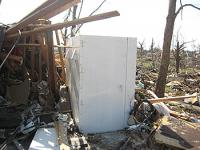
Protecting schools and their associated high-occupancy buildings from the most violent tornadoes is the goal of the first approved building code changes based on recommendations from the National Institute of Standards and Technology (NIST) technical investigation into the impacts of the deadly tornado that struck Joplin, Missouri, on 22 May 2011. The new changes, approved at a recent meeting of the International Code Council (ICC), apply to the nation’s most tornado-prone regions.
-
-
U.S. worsening droughts require alternative ways of protecting urban water supplies
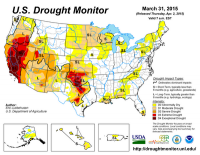
In the American West, unprecedented droughts have caused extreme water shortages. The current drought in California and across the West is entering its fourth year, with precipitation and water storage reaching record low levels. Droughts are ranked second in the United States in terms of national weather-related economic impacts, with annual losses just shy of $9 billion. With water scarcity likely to increase due to advancing climate change, the economic and environmental impacts of drought are also likely to get worse. Alternative models of watershed protection that balance recreational use and land conservation must no longer be ignored to preserve water supplies against the effects of climate change, experts argue.
-
-
Global warming may affect oxygen-producing ocean phytoplankton
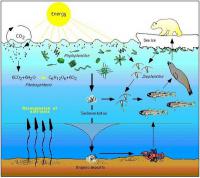
Past and current climate change has affected the food sources in the surface waters in the North Pacific Ocean. Climate change is predicted to alter marine phytoplankton (algae and diatoms) communities and affect productivity, biogeochemistry, and the efficacy of the biological pump. The slow global warming over the most recent approximate 150 years – roughly corresponding to the industrial revolution — has been beneficial, seeing an increase in nitrogen fixing cyanobacteria resulting in food production. “It’s sort of a carbon credit because the phytoplankton are making their own nitrogen-based fertilizer out of dissolved nitrogen,” says one researcher. But if global warming continues, the consequences may be dire. “This picoplankton community shift may have provided a negative feedback to rising atmospheric carbon dioxide, during the last 100 years. However, we cannot expect this to be the case in the future,” the researcher said.
-
-
Depletion of ocean phytoplankton could suffocate life on planet Earth

About two-thirds of the planet’s total atmospheric oxygen is produced by ocean phytoplankton — and therefore cessation would result in the depletion of atmospheric oxygen on a global scale, which could threaten the mortality of animals and humans.
-
-
Coal plant plans could make it impossible to hold warming below 2°C
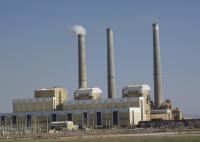
There are 2,440 planned coal plants around the world, totaling 1428GW, which could emit approximately 16-18 percent of the total allowed emissions in 2030 (under a 2°C-compatible scenario, medium range). If all coal plants in the pipeline were to be built, by 2030, emissions from coal power would be 400 percent higher than what is consistent with a 2°C pathway, according to a new analysis.
-
-
Climate change poses multiple threats to global food system
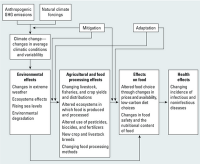
Climate change is likely to have far-reaching impacts on food security throughout the world, especially for the poor and those living in tropical regions, according to a new international report. The report warns that warmer temperatures and altered precipitation patterns can threaten food production, disrupt transportation systems, and degrade food safety, among other impacts. As a result, international progress in the past few decades toward improving food security will be difficult to maintain.
-
-
Social sciences are best hope for ending debates over climate change
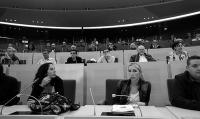
The toxicity of the public debate in the United States over climate change is increasing, and to detoxify the debate, we need to understand the social forces at work. We must recognize that the public debate in the United States over climate change is not about carbon dioxide and greenhouse gas models; it is about opposing cultural values and worldviews through which that science is viewed. The opposing sides have less to do with the scientific basis of the issue and more to do with the ways in which people receive, assess, and act upon scientific information. To move forward, we have to disengage from fixed battle on one scientific front and seek approaches that engage people who are undecided about climate change on multiple social and cultural fronts. Only by broadening the scope of the debate to include this social and cultural complexity can we ever hope to achieve broad-scale social and political consensus. More scientific data can only take us so far; engaging the inherently human aspects of this debate will take us the rest of the way.
-
-
2015 likely to be warmest on record, 2011-2015 warmest 5-year period: WMO
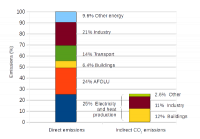
The global average surface temperature in 2015 is likely to be the warmest on record and to reach the symbolic and significant milestone of 1° Celsius above the pre-industrial era, according to the World Meteorological Organization (WMO). The years 2011-2015 have been the warmest five-year period on record, with many extreme weather events — especially heatwaves — influenced by climate change. Levels of greenhouse gases in the atmosphere reached new highs, with global average concentration of CO2 crossed the 400 parts per million barrier for the first time. “This is all bad news for the planet. Greenhouse gas emissions, which are causing climate change, can be controlled. We have the knowledge and the tools to act. We have a choice. Future generations will not,” said WMO secretary-general Michel Jarraud.
-
-
Paris pledges, if implemented and followed, can avert severe climate change
More than 190 countries are meeting in Paris this week to create a durable framework for addressing climate change and to implement a process to reduce greenhouse gases over time. A key part of this agreement would be the pledges made by individual countries to reduce their emissions. Scientists say that if implemented and followed by measures of equal or greater ambition, the Paris pledges have the potential to reduce the probability of the highest levels of warming, and increase the probability of limiting global warming to 2 degrees Celsius.
-
-
Global climate shift in the 1980s largest in 1,000 years
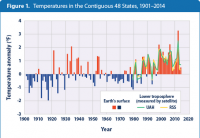
Planet Earth experienced a global climate shift in the late 1980s on an unprecedented scale, fueled by anthropogenic warming and a volcanic eruption, according to new research. Scientists say that a major step change, or “regime shift,” in the Earth’s biophysical systems, from the upper atmosphere to the depths of the ocean and from the Arctic to Antarctica, was centered around 1987. The scientists document a range of associated events caused by the shift, from a 60 percent increase in winter river flow into the Baltic Sea to a 400 percent increase in the average duration of wildfires in the Western United States. It also suggests that climate change is not a gradual process, but one subject to sudden increases, with the 1980s shift representing the largest in an estimated 1,000 years.
-
-
Equatorial regions’ power at risk from stormy space weather

Stormy space weather sweeping across the equator is threatening vital power grids in regions long considered safe from such events, ground-breaking new research reveals. The researchers found that these equatorial electrical disruptions threaten power grids in Southeast Asia, India, Africa, and South America, where protecting electricity infrastructure from space shocks has not been a priority.
-
-
U.S. enhances national space-weather preparedness
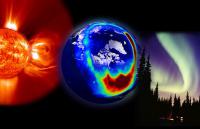
Space-weather events are naturally occurring phenomena in the space environment that have the potential to disrupt technologies and systems in space and on Earth. These phenomena can affect satellite and airline operations, communications networks, navigation systems, the electric power grid, and other technologies and infrastructures critical to the daily functioning, economic vitality, and security of the United States. The White House Office of Science and Technology Policy said that that is why the administration the other day released a National Space Weather Strategy and National Space Weather Action Plan, and announced new commitments from the federal and non-federal sectors to enhance national preparedness for space-weather events.
-
-
How bad will this El Niño be? Worse than you may think
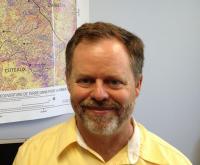
Last week, Columbia University Earth Institute’s International Research Institute on Climate and Society convened a 2-day workshop reflecting on efforts over the past twenty years to improve responses to climate variability, especially risks associated with El Niño. Concerns that the current El Niño has the potential to exceed in severity the devastating El Niño of 1997-98 permeated the discussion. At the conference, Marc A. Levy of the Earth Institute presented a brief overview of the social, economic, and political changes that will have a large effect on human impacts from El Niño. He amplifies those remarks here.
-
-
U Maine launches center for studying, developing coastal and offshore structures

During a laboratory dedication on Monday at the University of Maine, the Harold Alfond Foundation announced a $3.9 million grant to the University of Maine to match $9.98 million already raised, formally establishing the Harold Alfond W2 Ocean Engineering Laboratory and Advanced Manufacturing Laboratory at the Advanced Structures and Composites Center on campus. The UMaine Composites Center is the largest STEM research and development program located in a Maine university, and is at the heart of one of UMaine’s seven Signature Areas of Excellence — Advanced Materials for Infrastructure and Energy.
-
-
Records: October, year-to-date hottest in human history
October 2015 was the hottest October in modern history, and the first ten months of the year have also set new records for worldwide warmth, U.S. government scientists at the National Oceanic and Atmospheric Administration (NOAA) said last week. The combined average temperature over global land and ocean surfaces for October 2015 was the highest for October in the 136-year period of record, at 0.98°C (1.76°F) above the twentieth century average of 14.0°C (57.1°F). The first ten months of 2015 comprised the warmest such period on record across the world’s land and ocean surfaces, at 0.86°C (1.55°F) above the twentieth century average, surpassing the previous record of 2014 by 0.12°C (0.22°F).
-
More headlines
The long view
Trump Aims to Shut Down State Climate Policies
President Donald Trump has launched an all-out legal attack on states’ authority to set climate change policy. Climate-focused state leaders say his administration has no legal basis to unravel their efforts.
